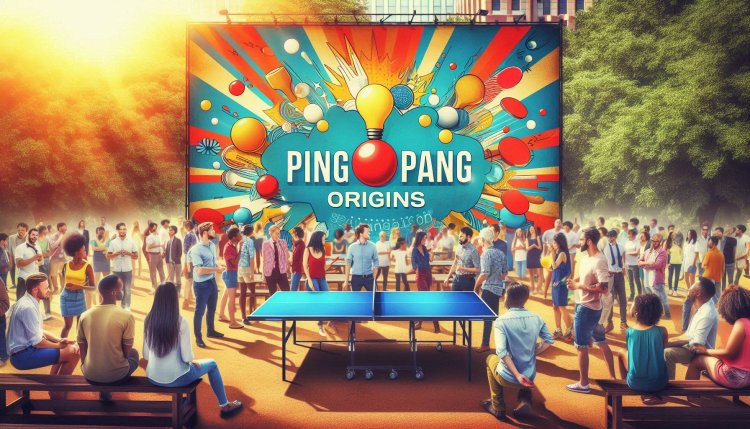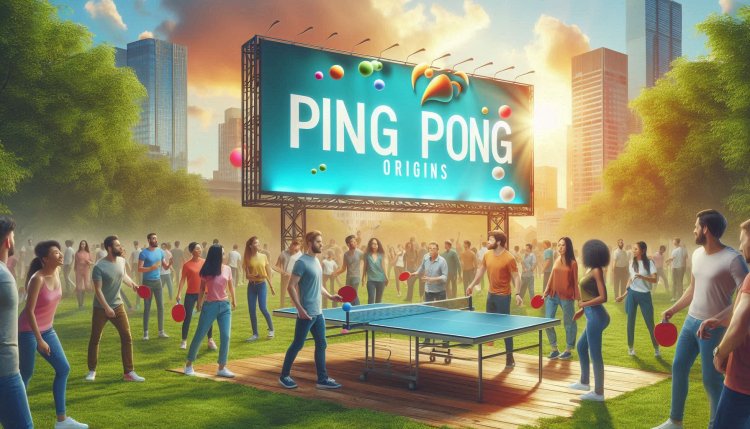Where Did Ping Pong Start? Tracing the Origins of Table Tennis
Ping pong, or table tennis, captivates millions worldwide as a fast-paced, competitive sport and recreational activity. But where did ping pong start? This article explores its fascinating journey
Ping pong, or table tennis, captivates millions worldwide as a fast-paced, competitive sport and recreational activity. But where did ping pong start? This article explores its fascinating journey from Victorian parlors to Olympic glory, revealing how a simple after-dinner pastime evolved into a global phenomenon.
Early Beginnings: A Victorian Parlor Game
The origins of ping pong date back to 1880s England, where it emerged as an indoor alternative to lawn tennis. Upper-class families repurposed household items—books as nets, cigar box lids as paddles, and cork balls—to create a leisurely post-dinner activity. Known initially as "whiff-whaff" or "gossima," the game’s popularity grew through social gatherings, though early versions lacked standardized rules or equipment.
The Birth of Ping Pong: Trademarks and Name Changes
In 1901, English manufacturer J. Jaques & Son Ltd trademarked the name "Ping Pong," inspired by the distinctive sound of the ball. This commercialization led to the sale of dedicated kits, including paddles and celluloid balls (introduced by James Gibb), which replaced erratic rubber balls. However, the trademark forced other manufacturers to adopt "table tennis" as the sport’s official name, creating a lasting duality in terminology.
Key milestones during this era include:

-
1901: Formation of the Ping Pong Association.
-
1926: Establishment of the International Table Tennis Federation (ITTF).
-
1927: First World Championships in London.
Evolution of Equipment and Rules
The sport’s transformation from parlor game to professional competition hinged on technological advancements:
-
Celluloid Balls (1901): James Gibb’s innovation increased game speed and consistency.
-
Rubber Paddles (1903): E.C. Goode’s rubber-coated blades introduced spin and control.
-
Sponge Rubber (1950s): Japanese players revolutionized tactics with sponge-layer paddles, enabling aggressive topspin plays.
Standardized rules, including a 21-point scoring system (later reduced to 11 in 2001), further professionalized the sport, distancing it from its casual roots.
Global Expansion: Asia’s Dominance
Post-World War II, table tennis surged in Asia. Countries like China, Japan, and South Korea embraced the sport, blending technical precision with strategic innovation. By the 1950s, China emerged as a powerhouse, winning its first World Championship in 1959. The 1971 "Ping-Pong Diplomacy" between China and the U.S. underscored the sport’s geopolitical impact, thawing Cold War tensions through player exchanges.
Olympic Recognition and Modern Innovations
Table tennis debuted at the 1988 Seoul Olympics, cementing its global status. Today, players like Ma Long and Ding Ning are household names, while advancements in racket technology and training methods push athletic boundaries. The ITTF continues to innovate, introducing larger balls (40mm) to slow gameplay and enhance viewer experience.

Conclusion: From Parlors to the World Stage
From its humble Victorian beginnings to Olympic arenas, ping pong’s journey reflects cultural and technological shifts. Its accessibility—requiring minimal equipment—ensures enduring appeal, while professional leagues and grassroots programs nurture future champions. Whether played in basements or stadiums, table tennis remains a testament to ingenuity and global connectivity.
FAQ: Answering Common Questions
Q: Who invented ping pong?
A: While no single inventor exists, British enthusiasts in the 1880s developed early versions. James Gibb and E.C. Goode later revolutionized equipment.
Q: Why is it called "ping pong"?
A: The name mimics the ball’s sound. J. Jaques & Son Ltd trademarked it in 1901, though "table tennis" became the sport’s official name.
Q: When did ping pong join the Olympics?
A: Table tennis became an Olympic sport in 1988, with events in singles and doubles.
What's Your Reaction?

















